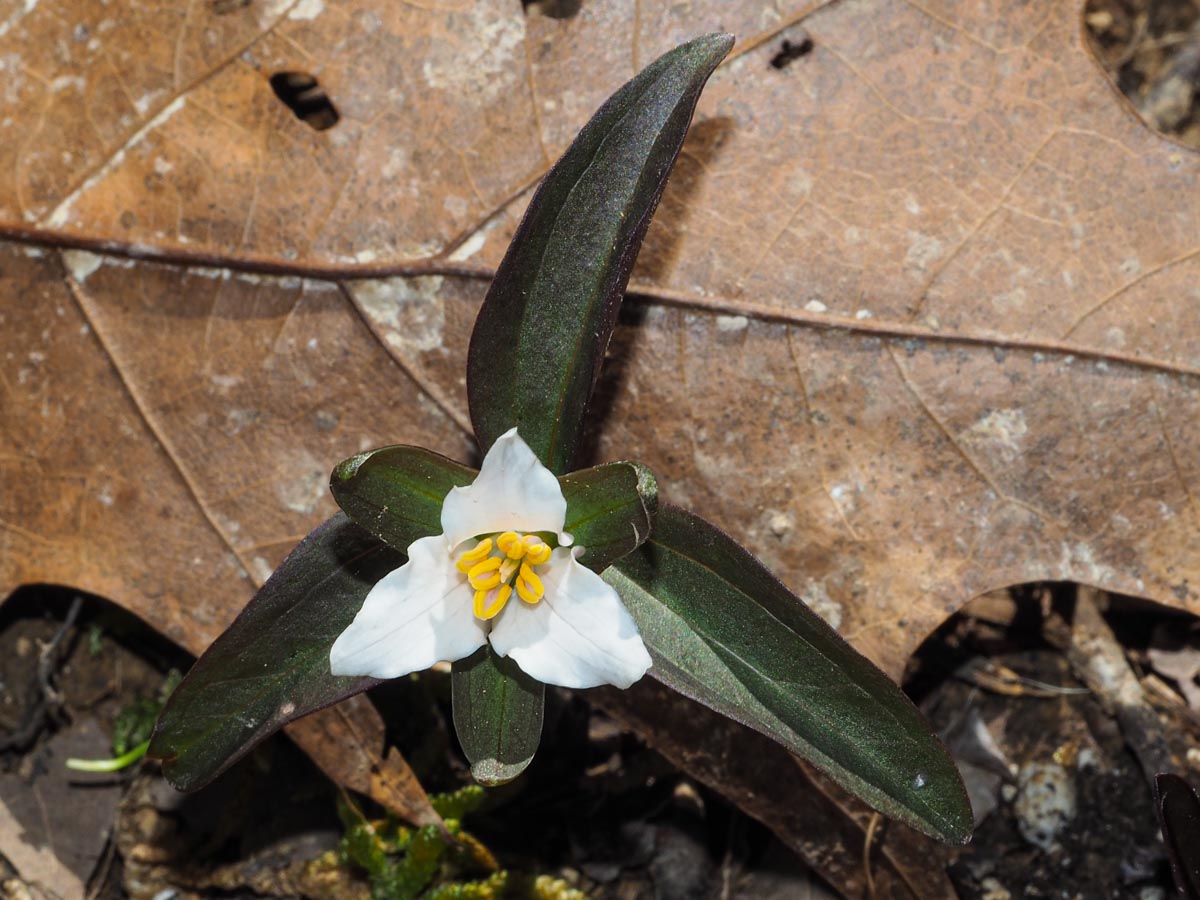Trilliums are among the gaudiest flowers in Tennessee forests. With around 50 species ranging from the western US to Asia, the highest diversity is in the southern Appalachians. One of the most recent discoveries was Trillium tennesseense right here in east Tennessee. It was found less than 10 years ago, in a park I hiked every week for years at that time. Maybe I walked right by it- there are always new species of plants and animals turning up in this biodiverse region.
When I first lived in east Tennessee, for four years ending with a move west in 2000, my home backed to national forest. Every spring I would hike up a steep slope above my orchard and admire the enormous drifts of wild trillium. When I moved back east and into my current home, there were no trillium at all. Over the years I have added a variety of native trillium. I currently have 10 species in my garden and am growing another dozen from plant society seed exchanges.
Trilliums have three of everything. They have three sepals, three petals, and produce a capsule fruit with three chambers. Then everything starts to get a bit confusing. The three apparent leaves are bracts, though they function as leaves with the ability to photosynthesize, so are often just called leaves. The true leaves are called cataphylls. They are papery scaly unrecognizable structures wrapped around the underground rhizome, which is the actual stem. All is not as it appears with these plants.
There is an adage for hikers that says leaves of three let it be. This is a warning to stay away from poison ivy, which can leave rashes. I feel as if the advice is equally appropriate for trillium. When hiking in local parks I’ve seen people picking the flowers. They are best left alone in the wild because seeds can take two years to germinate and seven years or more after that to flower.
The years between living in Tennessee I spent part of the time in western Washington, in a very different forest. The conifers and sword ferns shaded much of the earth, and very little else grew in my yard. Toward the back of my property, I relocated some of the sword ferns. The following year, trillium started coming up spontaneously. They must have been waiting years underground for this opportunity. They seem to be a tortoise in the plant world.
It would be hard to name a favorite but one of the cutest is Trillium pusillum ‘Roadrunner’. This is the smallest species of Trillium, with this variety only growing 6 to 8” tall. The leaves start off purple and then turn green, while the flower opens white but slowly turns pink. That is a lot of drama for such a small plant. Planted just last fall courtesy of Jan Sacks and Marty Schafer it is already putting on a beautiful show as seen in this photo. For reference the entire plant is dwarfed by the oak leaf that fell on the ground behind it, leading to the appropriate common name of dwarf wakerobin.
Every day more trillium leaves are appearing, and buds are already growing on several more species. I am looking forward to a month or more of these flashy flowers. They have come home to a place they once grew, and as they settle in the woodland looks more primeval every year. I am reminded of being in city limits by the apartments next door, and the buses going back and forth on the nearby road. Still, plant by plant I am determined to bring back at least part of the forest once covering this hillside. More curious creatures arrive every year, and the dance between plants and animals resumes with their timeless interactions.
